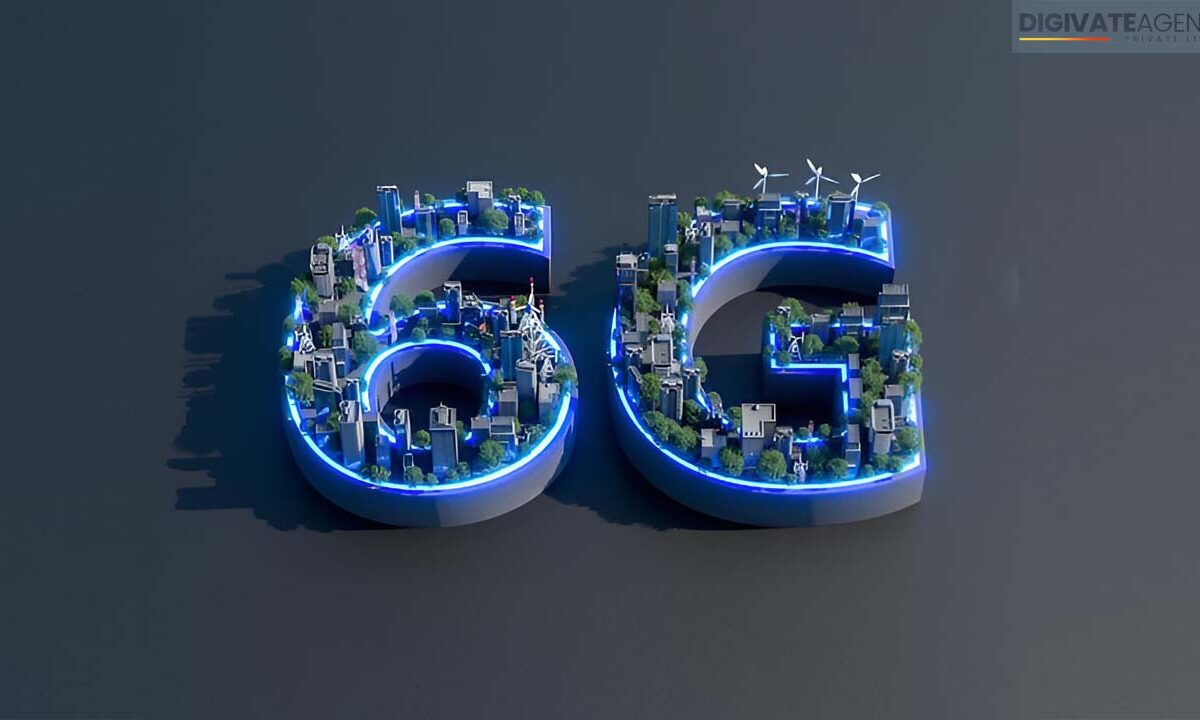The world is on the cusp of a connectivity revolution, with 6G global leadership 2025 driving the charge toward next-gen mobile networks. As 5G reshapes industries, the race for sixth-generation wireless is already underway, promising ultra-fast communication tech that could transform how we live, work, and connect.
From future mobile infrastructure to smart network technologies, this blog post explores the global players, cutting-edge innovations, and strategic efforts shaping the global connectivity race. Backed by credible sources and packed with insights, this guide will help you understand who’s leading the charge and what it means for the future.
From Now to Next: Why the Shift Toward Ultra-Fast Wireless is Critical
The Limitations of Existing Mobile Technologies
Today’s 5G networks, while impressive, are hitting their limits. High-capacity data systems are struggling with bandwidth saturation, especially in urban areas where IoT devices and streaming services strain networks. A 2025 GSMA report notes that global mobile data traffic is expected to grow by 35% annually through 2030, overwhelming current infrastructure. Latency issues also persist, hindering applications like autonomous driving that demand ultra-low latency networks.
These constraints highlight the need for advanced mobile evolution. 5G’s maximum speed of 10 Gbps pales compared to 6G’s projected 1 Tbps, per Ericsson’s 2025 forecast. As demand for high-speed data innovation grows, sixth-generation wireless is poised to address these gaps with innovative data exchange models.
Why the Future Depends on Next-Gen Wireless
The push for next-level connectivity is driven by industries hungry for seamless digital communications. Healthcare relies on ultra-reliable communication for remote surgeries, while smart cities need high-bandwidth infrastructure for real-time traffic management. The Internet of Things (IoT), projected to connect 125 billion devices by 2030 (Statista, 2025), demands future-ready wireless spectrum to handle massive data flows.
Businesses and consumers alike are clamouring for enhanced broadband standards that support augmented reality (AR), virtual reality (VR), and holographic communication. 6G’s future wireless protocols promise to deliver, making it a cornerstone of the mobile innovation landscape.
The Global Race to Dominate the Wireless Future
China’s Strategic Research & Funding Model
China is a powerhouse in the 6G global leadership 2025 race, backed by robust state support and private-sector innovation. Since launching its 6G program in 2018, China has invested over $22 billion in R&D, per a 2025 China Mobile report. Companies like Huawei and ZTE are testing high-speed data innovation, achieving 100 Gbps in future mobile infrastructure trials using terahertz bands.
China’s focus on intelligent wireless grids and global digital competitiveness gives it an edge. Its push for early standardization through the ITU positions it to influence future wireless protocols, solidifying its role in global telecom advancements.
The U.S. Competitive Approach Through Private Innovation
The United States is a fierce contender, driven by tech giants and government initiatives. The Next G Alliance, backed by Qualcomm and AT&T, is advancing cutting-edge data transmission through smart network technologies. The FCC’s 2025 spectrum auctions for future-ready wireless spectrum have unlocked terahertz bands, aiming for ultra-fast communication tech by 2030.
A National Science Foundation report (2025) highlights $1.2 billion in 6G funding, with Apple and Google exploring integrated mobile systems for consumer applications. The U.S.’s strength lies in its mobile tech front-runners, blending innovation with market-driven solutions.
Europe’s Cohesive Telecom Programs
Europe’s collaborative approach shines through projects like Hexa-X II, uniting Nokia, Ericsson, and universities across the EU. With €1 billion allocated to 6G R&D (EU Commission, 2025), Europe is prioritizing upcoming connectivity trends like ultra-low latency networks for smart cities and sustainable mobile architecture.
The EU’s focus on seamless digital communications and cross-border standardization strengthens its global connectivity race position. By fostering emerging wireless capabilities, Europe aims to balance innovation with inclusivity.
Leadership from South Korea and Japan
South Korea and Japan are technological titans in 6G global leadership 2025. South Korea’s Samsung has demonstrated 50 Gbps speeds in high-bandwidth infrastructure trials (ETRI, 2025), while Japan’s NTT Docomo is pioneering holographic communication via ultra-reliable communication. Both nations target 6G commercialization by 2028, per their respective science ministries.
Their expertise in breakthrough telecom solutions and futuristic wireless platforms positions them as mobile tech front-runners, driving the advanced mobile evolution forward.
Under the Hood: What Powers Future Wireless Infrastructure
The Role of Artificial Intelligence in Smart Networks
Smart network technologies are the backbone of 6G, with AI playing a pivotal role. Machine learning optimizes traffic, predicts demand, and enhances ultra-reliable communication. Nokia’s 2025 research suggests AI could cut network latency by 40%, enabling innovative data exchange models for applications like autonomous drones.
Intelligent wireless grids also support self-optimizing networks, reducing downtime and boosting efficiency. This network transformation roadmap ensures 6G delivers seamless digital communications across diverse use cases.
Exploring the High-Frequency Spectrum
6G’s promise of high-speed data innovation hinges on terahertz (THz) frequencies, operating between 100 GHz and 3 THz. These bands offer massive bandwidth for cutting-edge data transmission, but challenges like signal loss require advanced beamforming, per a 2025 IEEE study. China and Japan’s THz trials show progress, but scaling for high-bandwidth infrastructure remains complex.
The future-ready wireless spectrum will unlock next-level connectivity, supporting everything from VR gaming to real-time industrial automation.
Focus on Green and Scalable Mobile Architecture
Sustainability is a cornerstone of 6G. With 5G’s high energy consumption, 6G aims to reduce power usage by 50% through AI-driven optimization and eco-friendly materials, per Ericsson’s 2025 report. Sustainable mobile architecture aligns with global climate goals, ensuring futuristic wireless platforms are environmentally responsible.
This focus on emerging wireless capabilities also supports scalable mobile architecture, allowing networks to adapt to growing data demands without compromising efficiency.
Global Standards and Policy Challenges
Aligning Worldwide Regulations
Creating future wireless protocols requires global consensus, a daunting task given competing national interests. The ITU’s 6G standardization, set for 2030, faces delays from differing spectrum policies, per a 2025 GSMA report. Harmonizing global digital competitiveness is critical to avoid fragmented next-gen mobile networks.
Europe’s push for seamless digital communications through unified standards could set a precedent, but geopolitical tensions may slow progress in the global connectivity race.
Security in a Hyper-Connected World
Ultra-reliable communication demands robust security. With 6G enabling billions of IoT devices, cybersecurity risks are soaring. A 2025 Cybersecurity Ventures report projects cybercrime costs could reach $12 trillion by 2030, pushing 6G developers to prioritize encryption and smart network technologies for data protection.
Privacy concerns also loom, as innovative data exchange models raise questions about surveillance. Building trust in next-level connectivity is essential for widespread adoption.
Infrastructure and Investment Hurdles
Deploying future mobile infrastructure is costly, with GSMA estimating $1.5 trillion in global 6G investments by 2035. Developing nations face challenges in funding high-bandwidth infrastructure, risking a wider digital divide. Public-private partnerships and innovative financing will be key to scaling scalable mobile architecture.
Timeline Forecast: When Will This All Arrive?
Tech Trials and Roadmap Milestones
The network transformation roadmap points to 6G commercialization between 2028 and 2030. South Korea plans a 2028 launch, while China targets 2029, per industry reports. Pilot tests, like Samsung’s 50 Gbps trial, showcase emerging wireless capabilities, with urban rollouts expected first.
The ITU’s 2030 standardization deadline will shape the future-ready wireless spectrum, ensuring global telecom advancements align with market needs.
What Consumers and Businesses Should Expect
For consumers, 6G will bring ultra-fast communication tech, enabling AR shopping, holographic calls, and seamless IoT integration. Businesses will benefit from high-capacity data systems, enhancing automation and cloud workflows. McKinsey’s 2025 report predicts 6G could add $3.5 trillion to global GDP by 2035, driven by breakthrough telecom solutions.
Key Questions About 6G Global Leadership
What Is the Difference Between Current Networks and Future-Generation Mobile Tech?
Sixth-generation wireless offers ultra-low latency networks, high-speed data innovation, and AI-driven optimization, surpassing 5G’s enhanced broadband standards.
Who Are the Leaders in Telecom Advancement for Next-Gen Wireless?
China, the U.S., Europe, South Korea, and Japan lead 6G global leadership 2025, excelling in futuristic wireless platforms and smart network technologies.
When Will These Advancements Be Available to the Public?
6G is expected by 2028–2030, with early adopters deploying next-gen mobile networks in urban areas first.
What Technologies Support Ultra-Fast Mobile Systems?
AI, terahertz bands, and sustainable mobile architecture drive cutting-edge data transmission and intelligent wireless grids.
How Secure Are Future Communication Networks?
6G prioritizes ultra-reliable communication with advanced encryption, but privacy and cybersecurity remain critical challenges.
Final Thoughts: Why This Matters Now
The 6G global leadership 2025 race is more than a tech competition—it’s a defining moment for global digital competitiveness. China, the U.S., Europe, and Asia’s tech giants are pushing the boundaries of next-level connectivity, driven by innovation and collaboration. As future mobile infrastructure takes shape, 6G promises to transform industries and empower consumers with seamless digital communications.
Stay ahead of the curve by following upcoming connectivity trends. The mobile innovation landscape is evolving, and 6G is set to lead the way.




